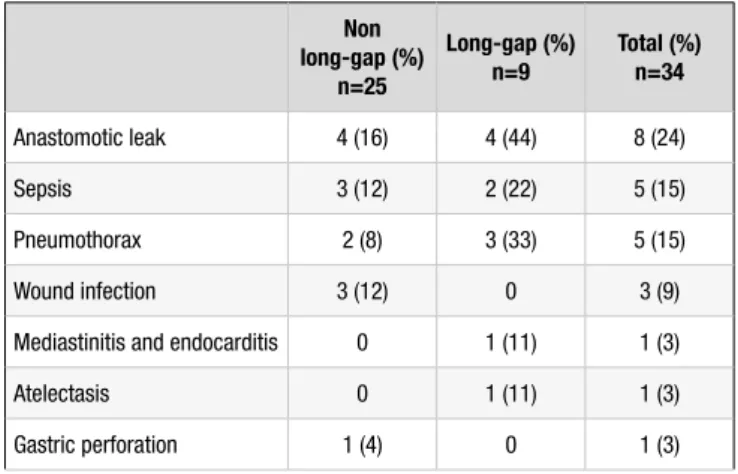Oesophageal atresia: a 10-year experience of a Paediatric Intensive Care Unit
Texto
Imagem

Documentos relacionados
Data were collected from medical records and included the following: gestational age at prenatal diagnosis, gestational age at delivery, mode of delivery, birth weight,
Background maternal and neonatal data : maternal age, prenatal diagnosis, type of delivery, Apgar scores, birth weight, gestational age and sex; (B) Surgical modalities : primary
Weight-gain velocity rate increases over the phases and was associated with maternal (age) and infant (gestational age at birth, birthweight, gestational weight for age at birth,
variables analyzed were: gender, gestational age at birth, weight, birth conditions, delivery route, maternal age and to identify the clinical changes presented by the newborns
Biological risk was assessed by a few perinatal factors, such as gestational age at birth, birth weight, pregnancy complications, and the number of prenatal consultations, and a
Most of the reference data for assessing birth weight for gestational age deal with insufficient sample size, especially at low gestational age.. Population-based studies
We studied the association between the shock of birth and maternal data (age, marital status, race, residence, obstetric gestational age, parity and prenatal care), obstetric
The independent variables analyzed were: age, gender, type of admission (clinical, clinical emergency, postoperative), diagnosis for admission to the intensive care unit